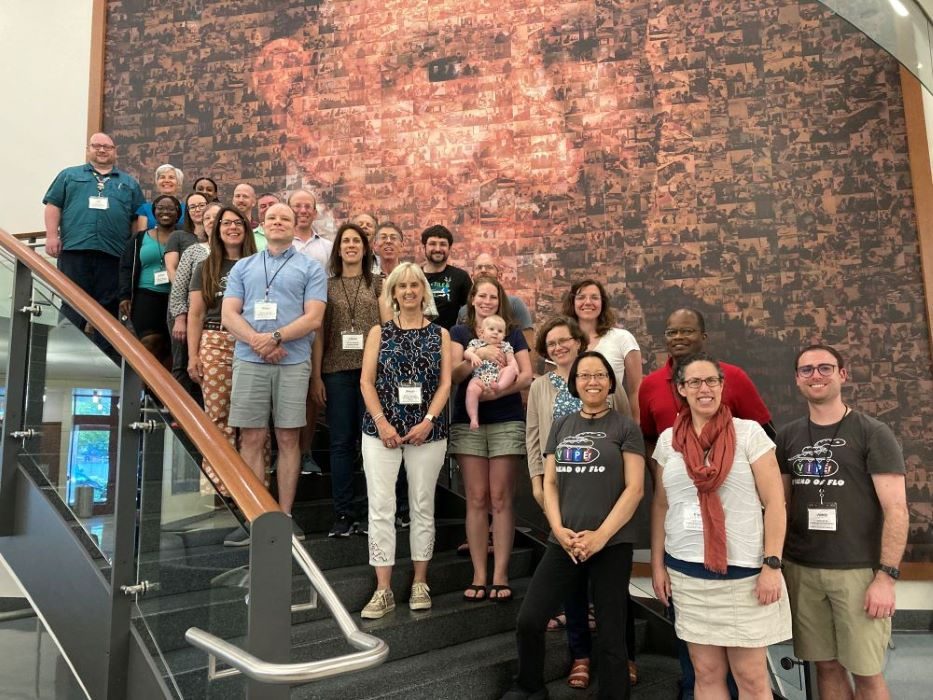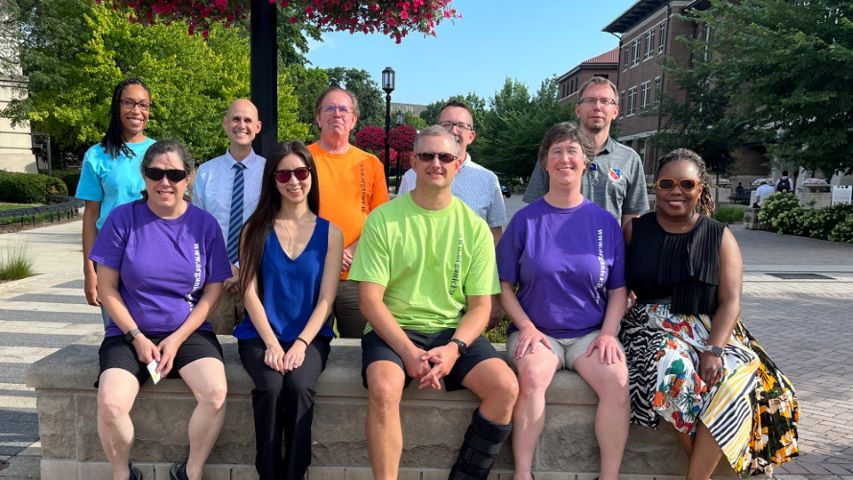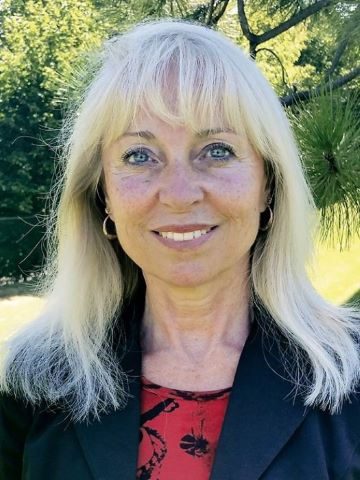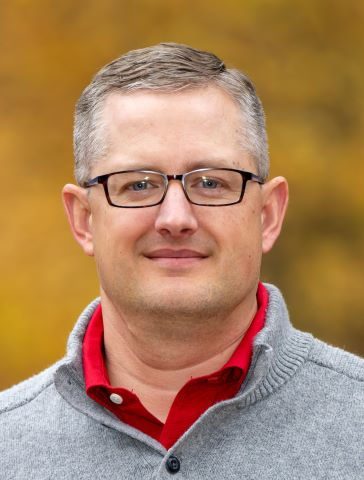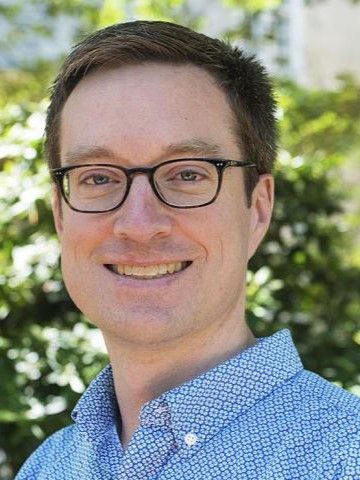Bringing instructors together, building teaching resources
Leslie Mertz for the American Chemical Society
Thanks to a collection of "communities of practice" across chemistry subdisciplines, instructors are finding new ways to connect and engage with peers online and in person. In addition, they are tapping into and contributing to a wealth of supplemental teaching resources that can make classrooms and labs more interesting, motivating, and relevant for both instructor and student.
The leaders of a few of these communities took time at the busy beginning of fall semester to talk to the American Chemical Society (ACS) Approval Program about what they offer.
Analytical Chemistry
Instructors of analytical chemistry can find communities of practice through both the Analytical Sciences Digital Library (ASDL) and ACS Division of Analytical Chemistry (ANYL) Education Committee.
The ASDL began in 2002 as a free online repository of supplemental teaching materials, and has since grown to include everything from learning modules to e-books, and hundreds of in-person and remote labs and classroom activities submitted by analytical chemistry educators. It also hosts occasional virtual seminars on wide-ranging subjects of interest.
Since its inception, the ASDL has emphasized active and problem-based learning, which require students to participate in their education through discussion, problem-solving, investigation, and creativity, explained Anna Cavinato, Ph.D., 2023 chair of the ACS Division of Analytical Chemistry (ANYL) that has financially supported the ASDL for nearly two decades. Cavinato is also a professor of chemistry at Eastern Oregon University. "For example, I am getting ready to teach analytical chemistry and I will be incorporating active-learning, problem-based projects into my labs," Cavinato said. "For one, we will be working with scientists from the U.S. Forest Service to perform water-monitoring work in the context of assessing the impact of different grazing practices along a nearby forest stream. For the other, we will collaborate with Professor Marya Lieberman at the University of Notre Dame to assess whether antibiotics collected in Third World countries are counterfeit or not."
Beyond its support for the ASDL, the ANYL Division has an Education Committee that offers multiple enrichment opportunities for analytical chemistry instructors. These include holding virtual networking hours that help instructors connect, and organizing a range of panel discussions as well as symposia at national meetings on current hot topics that keep faculty up to date on new developments in education, Cavinato said. "The committee also has longer-term project goals, such as interviewing analytical scientists about their work to create a video library."
All of these efforts build community and augment teaching, she said. "Like many analytical chemistry faculty, I am at a small university — we have only six chemistry faculty total — and I have found that my association with ANYL and the ASDL have been incredible assets for personal and professional growth." She added, "Overall, the ASDL and networking opportunities provide a wonderful way to reach out to faculty across the country, access all of these resources, stay on top of things, and ultimately help students learn analytical chemistry better."
Inorganic chemistry
Connection- and curriculum-building are also central to the Interactive Online Network of Inorganic Chemists (IONiC) and Virtual Inorganic Pedagogical Electronic Resource (VIPEr).
"Inorganic chemistry is a really broad field with many specialized focus areas, and an undergraduate course may span all of those focus areas," said Barbara Reisner, Ph.D., a member of the IONiC/VIPEr leadership team and an inorganic chemistry professor at James Madison University of Harrisonburg, Virginia. "As a result, we may be teaching outside of our area of expertise, which makes it very important to have other people to talk to and share educational materials with." That's where IONiC and VIPEr come in. IONiC is the community of inorganic instructors, and the VIPEr website is the material-sharing repository.
Since starting in 2007, VIPEr has amassed a vast resource collection of instructor-submitted materials that are accessible by its 3,000-plus registered users. Navigation through the still-growing repository is organized by focus area, such as solid-state or organometallic chemistry, and by type of "learning object," such as literature discussion, problem-set question, or lab activity. "These materials emphasize evidence-based teaching practices and are designed to be easily adapted by users. In addition, all of the materials on VIPEr go through a level of review by community members, so users know materials are reasonable and have no glaring errors," Reisner said.
On the IONiC side, instructors can engage in a number of ways. They can join a "work party" on the dedicated Discord channel as an opportunity to interact with others; attend IONiC's yearly "Undergraduate Research at the Frontiers of Inorganic Chemistry" symposium held at the ACS annual meeting; take part in a summer workshop that affords instructors the chance to hear about a topic from an expert, discuss associated scientific advances, and generate new VIPEr materials based on fresh knowledge and perspective; or take advantage of any of a variety of inorganic-centered, online programming offerings.
Through all these avenues, IONiC and VIPEr have become meaningful assets for inorganic instructors, according to Reisner. "Friendships have formed, and so have collaborations for both teaching courses and doing research. And everyone is so responsive. As an example, you can just put out a call for help on our Discord channel — perhaps you need some instrumental measurements or crystallography done — and someone always volunteers." She added, "It's a very kind, caring, and supportive community."
Organic chemistry
Organic Chemistry Education Resources (OrganicERs) got its start when Jennifer Muzyka, Centre College of Danville, Kentucky, organized a birds-of-a-feather group for organic-chemistry instructors at the 2012 Biennial Conference on Chemical Education (BCCE) at Penn State. "We had all heard about active-learning pedagogies through IONiC/VIPEr and through the literature, saw their value, and wanted to help organic chemists better implement these learning techniques," said Justin Houseknecht, Ph.D., a member of the OrganicERs leadership board, and professor of chemistry at Wittenberg University in Springfield, Ohio. The group's original thought was to gather and post teaching resources on a website, but they decided to think bigger at the suggestion of David Collard, co-director of the Chemistry Collaborations, Workshops, and Communities of Scholars (cCWCS) project.
Within a year of that initial BCCE meet-up, OrganicERs not only had a website, but was preparing to offer the first of what would become a series of faculty development workshops on how to use active-learning techniques. As of 2023, OrganicERS has offered a total of eight such workshops — the first five with funding from cCWCS, and three others with National Science Foundation (NSF) support — and is now seeking NSF funding for 10 more. In addition to the workshop, OrganicERS has added limited-size, post-workshop "faculty learning communities" so attendees can continue to discuss topics of interest, while also forming closer professional bonds with one another. "We have had such good feedback that we are now hoping to expand these small faculty learning communities by next summer so any instructors can take part," Houseknecht noted.
The OrganicERS website serves as the entrance to its library of resources, which include links to recommended videos, books, scholarly articles, and other published materials, along with a members-only section of curricular materials submitted by organic instructors. As of fall 2023, 950 instructors had registered as members.
Beyond these efforts, OrganicERs organizes symposia at BCCE biannual meetings, facilitates conversations via a 700-plus-member Facebook page, and publishes a newsletter that highlights faculty-development opportunities, and member articles and other accomplishments.
All of these efforts are paying off, Houseknecht said. In addition to documenting significant gains in the implementation of active-learning approaches by OrganicERs workshop participants, he is hearing from faculty that they are implementing more evidence-based methods in their teaching. "Members have also become more engaged,” he noted. “They're giving talks at symposia, writing papers and book chapters describing the changes in teaching that they've made. And of course, they are participating more in conversations with other members."
Physical chemistry
Lowering Activation Barriers to Success in Physical Chemistry (LABSIP) resulted from conversations during a Cottrell Scholars meeting in 2022. "Some newer PChem faculty were talking about the drawbacks associated with current teaching models and the lack of resources to do things differently," said Casey Londergan, Ph.D., a LABSIP founder, and professor and chair of chemistry at Haverford College in Haverford, Pennsylvania.
He and nine other PChem educators took action by launching LABSIP, and obtained a Cottrell Scholars Collaborative award to put together two workshops on active-learning methods. They held the first — an online event — in November 2022. "We ended up having 160-170 participants, so it was quite clear there was a need for it and energy behind it," Londergan recalled. They followed up with a second workshop, which was held in June 2023, and then set up a Discord group for PChem instructors. Within three months, the group had more than a hundred active users.
In addition, organizers held a separate, smaller workshop targeting general learning goals for introductory PChem courses, which generated two products: a list of non-content-based learning goals, and a minimal content core around which instructors can then design an interesting and effective course injected with active-learning techniques. Both will soon be posted on LABSIP's website.
LABSIP organizers have also just established two running "micro-communities of practice": one on equity, inclusion, and access in PChem courses, and the other for faculty members just starting their careers. Next up in LABSIP's evolution is to serve as a gathering area and centralized resource to help connect PChem instructors with existing communities of practice, such as POGIL-PCL and the ESCIP project.
While all of that is under way, LABSIP's focus will remain on nurturing a community of successful PChem educators. "A lot of instructors, certainly at small institutions but even at large ones, often feel like they're on an island in terms of thinking about what they're going to teach in their courses and how they are going to do it effectively," Londergan said. "Knowing that somebody else is out there who has the same questions and is facing the exact same issues is something that has already proven to be very empowering. Now, we are hoping to continue to build momentum."
